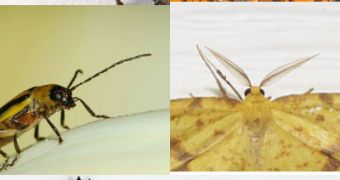It would finally appear that some of the money channeled into the Pentagon has yielded conclusive results. A project the institution funded, and that was conducted by experts at the University of California in Berkeley (UCB), has managed to create the first cyborg flying insect, a machine of sorts that is half biological and half mechanical. The accomplishment sent ripples of amazement through the international scientific community, as this was the first time a flying insect was controlled via computer.
Three “variants” of beetles were created in the new project, the UCB science team has shown. They were flown inside a room using nothing more than a laptop computer. When one of the cyborgs was tethered to a transparent plate, it became obvious how it moved its limbs, in response to the commands it received from its human operator.
The two researchers in charge of the UCB team were Michel Maharbiz and Hirotaka Sato, and they “demonstrated the remote control of insects in free flight via an implantable radio-equipped miniature neural stimulating system,” the two wrote in the latest issue of the Frontiers in Neuroscience magazine.
“It's because we have got much better at nanotechnology and making small probes that we are able to do this. You are plugging electrical devices into its nervous system and then triggering its muscles so that when it is flying, if you put a little bit more zorch into the muscle on the left-hand side, that will flap a bit harder and that will control the direction it is going in,” Sheffield University Professor of Robotics and Artificial Intelligence Noel Sharkey told the BBC World Today program.
“They can remotely control its muscles but it can't actually take off and I'm not sure really what they're playing at here. You talk about the payload of a flying object such as a plane or model aeroplane, the payload being the amount it can carry while staying in the air. Now with these big beetles, they can get the electronics aboard but nothing else. For instance, for this to be useful at all for the military, it would have to have a GPS receiver/transmitter so they could tell what position it was in,” he added.
Military uses for the robots could include their needing to carry a decent-sized lens, or maybe even a GPS transmitter/receiver, so that their position is known to their operators at all times. Flies, moths and dragonflies are also investigated for their potential of being turned into cyborgs. The beetles the UCB team used are very large, the size of a human palm, and, in spite of that, they cannot carry anything else.

 14 DAY TRIAL //
14 DAY TRIAL //